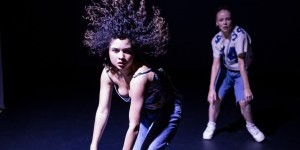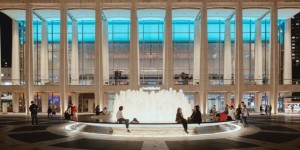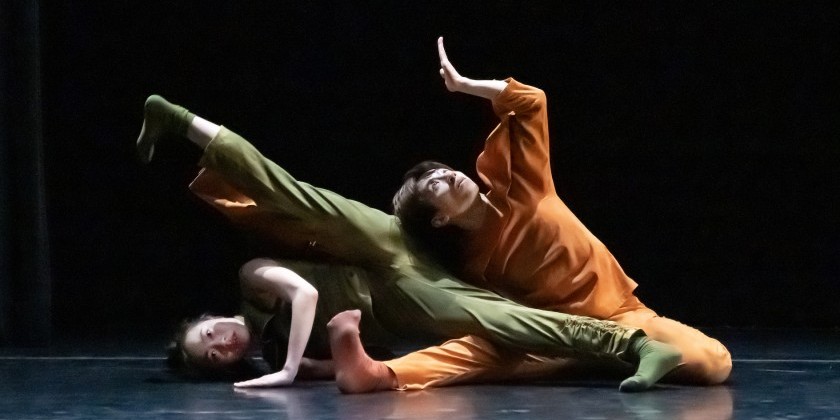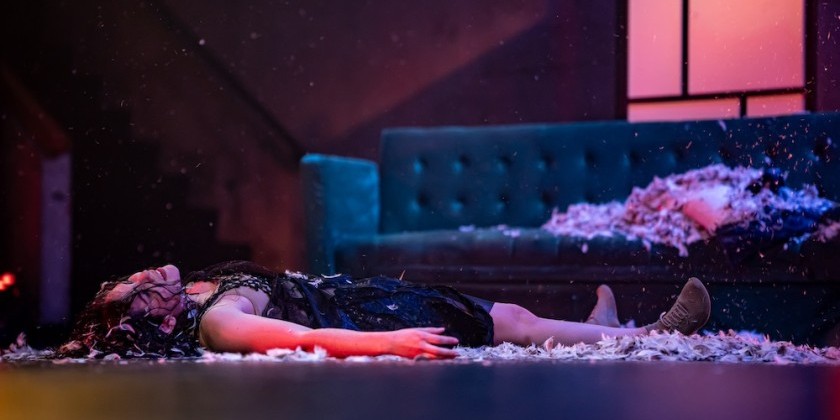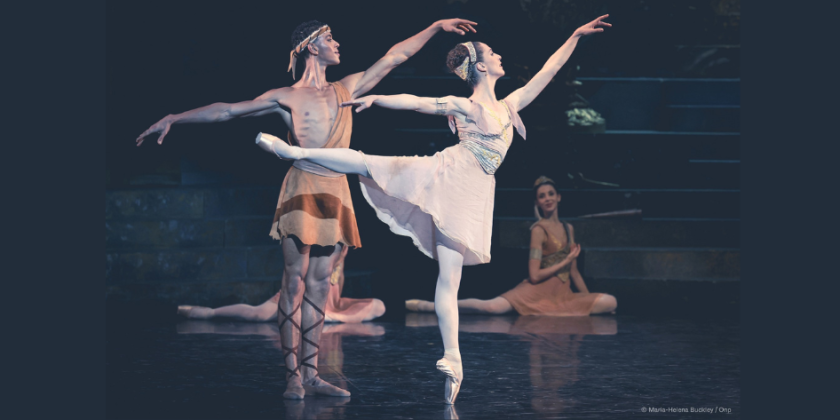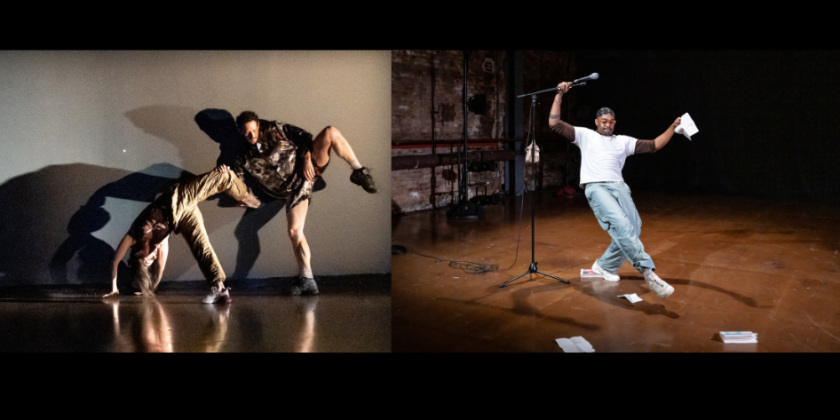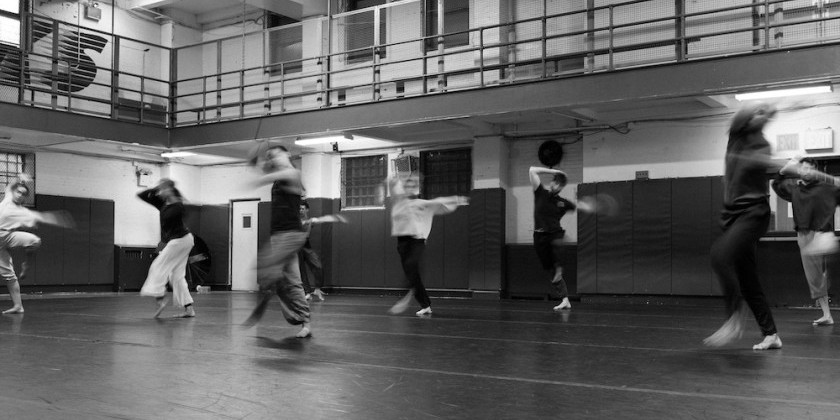IMPRESSIONS: Jean Butler's "What We Hold" at the Irish Arts Center
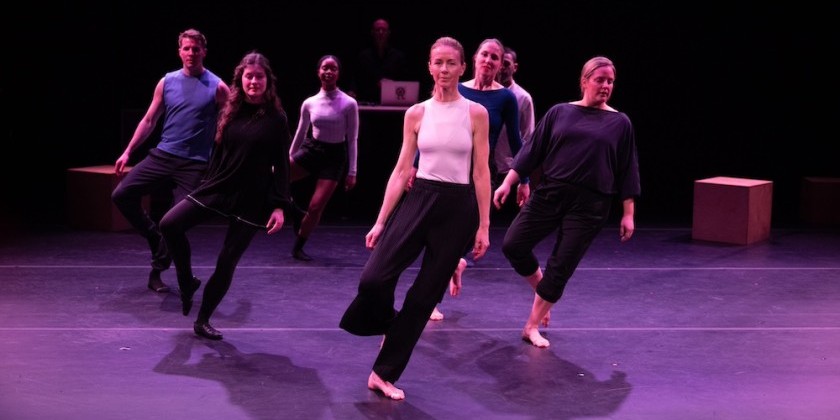
Featuring: Jean Butler, Tom Cashin, Marion Cronin, Colin Dunne, Kristyn Fontanella, James Greenan, Kaitlyn Sardin, Maren Shanks, and composer Ryan C Seaton
Created, Choreographed, and Directed by: Jean Butler
Composer and Sound Design: Ryan C Seaton | Set Designer: Katie Davenport | Costume Design: Harriet Jung and Reid Bartelme | Lighting Design: Stephen Dodd | Sound Sculpture Design: Ryan C Seaton and Andrew Rumpler | Associate Director: Laura Murphy
Performance and Rehearsal Consultant: Levi Gonzalez | Dramaturge: Shane O’Reilly | Consultant: Louise Lowe
Dates: Now through March 3, 2024
Tickets: Visit the Irish Arts Center website
When we contemplate memory, it’s often in an abstract or intangible form: memories are thoughts, feelings, and pictures that reside inside the mind to be recalled through written or verbal storytelling. Memory is situational and imperfect in its essential subjectivity; something irrecoverable is lost when “memory fails.”
Dancers possess an intimate knowledge of another kind: embodied memory. This phenomenon is of course not confined to dancers, but the embodied memory of dancers stands out as the foundation of our art form. It encompasses conscious and unconscious physical traces — postures, patterns, rhythms, forms, sensations—that directly shape us: as individuals in body and mind, and as a collective in the lineage that connects history and future through our embodied presence. But how much can something as fallible and ephemeral as memory hold?
For Jean Butler, the answer is: everything. The dancing body holds, recalls, shapes, and creates dance in ways that are always tangible. Dance is never an abstraction; it is a presence that unfolds in the body, in that ever-fleeting moment that bridges what’s gone by and what’s to come. Butler’s intimate What We Hold is a living manifestation of embodied intergenerational memory in Irish dance traditions, which the choreographer and former Riverdance star also stewards through Our Steps, a wide-ranging archival and performance project.
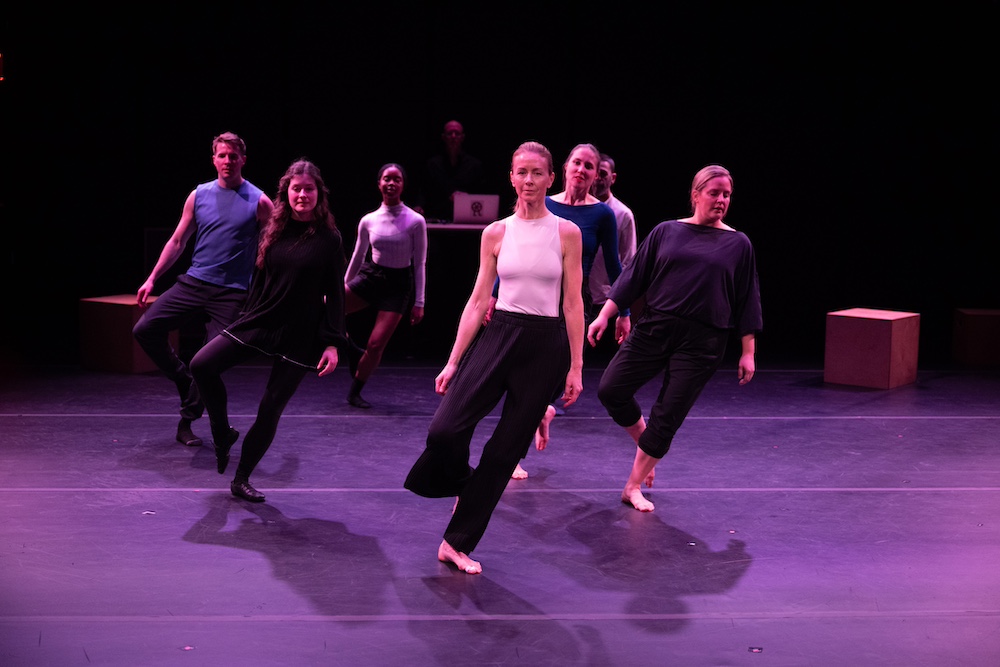
Butler makes visible the lineage of Irish dance first through the cast of performers: a group of eight accomplished Irish dancers (herself included) who range from 15 to 70 years old. Each dancer is strikingly different in figure and demeanor, yet together they are firmly rooted in a common physical language. Their dancing is invigorated by overlapping snippets of oral histories and traditional melodies that weave though Ryan C Seaton’s soundscore, which permeates the space by means of sculptures that lend the sound a close, palpable quality.
This intimacy is further reflected in the show’s ambulatory flow through a series of variously partitioned and sparingly lit spaces within the Irish Arts Center’s black box theater. The dressed-down styling stands in stark contrast to the flash and spectacle of Riverdance and competitive Irish dance, instead drawing attention to the dancers who live through their practice. Above all, it’s the details that draw the viewer through a journey of astonishment, curiosity, observation, and empathic joy; Butler and her comrades show their love for the form through this attention to the intricacies of texture, quality, and sensation.
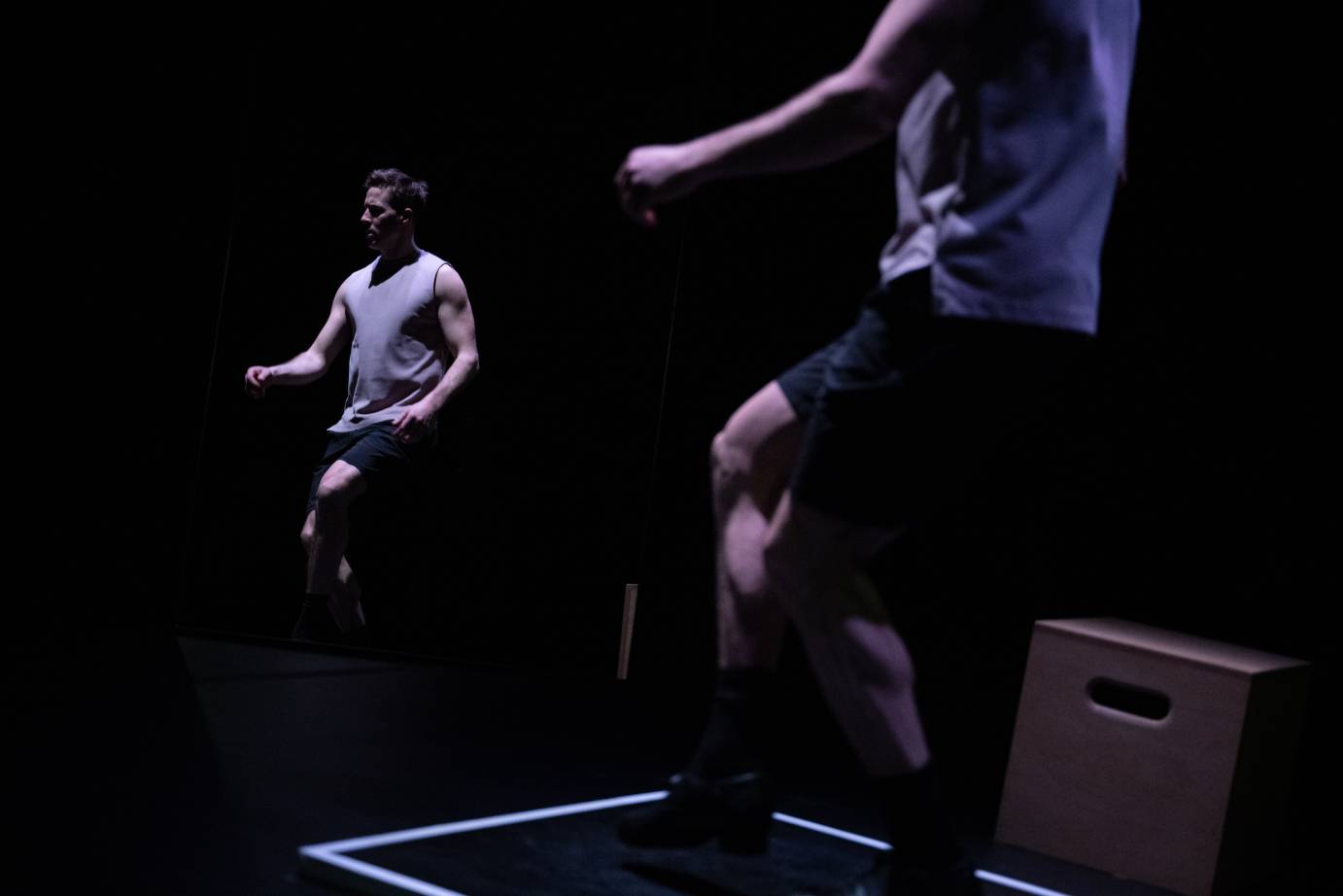
James Greenan. Photo: Nir Arieli
As a percussive dance form, rhythmic and formal precision are hallmarks of Irish dance, which James Greenan displays in a staggeringly virtuosic ten-minute solo beaten out in the space of a small sprung wooden square. He builds rhythms through repeating cycles, punctuating light steps and taps with sharp heel drops and measured scuffs and slides; he is a veritable metronome keeping exact time while stitching a furious fugue of complex patterns with devilish ease. His feet beat the floor like a drum in the otherwise quiet space, but his whole body makes the rhythms happen: arms swing to loft his fluttering toes, torso taut to bear gravity as a riff shoots back from his heels in rapidfire woodpecker trills. It’s only when he stops that the sheen of his sweat becomes apparent.
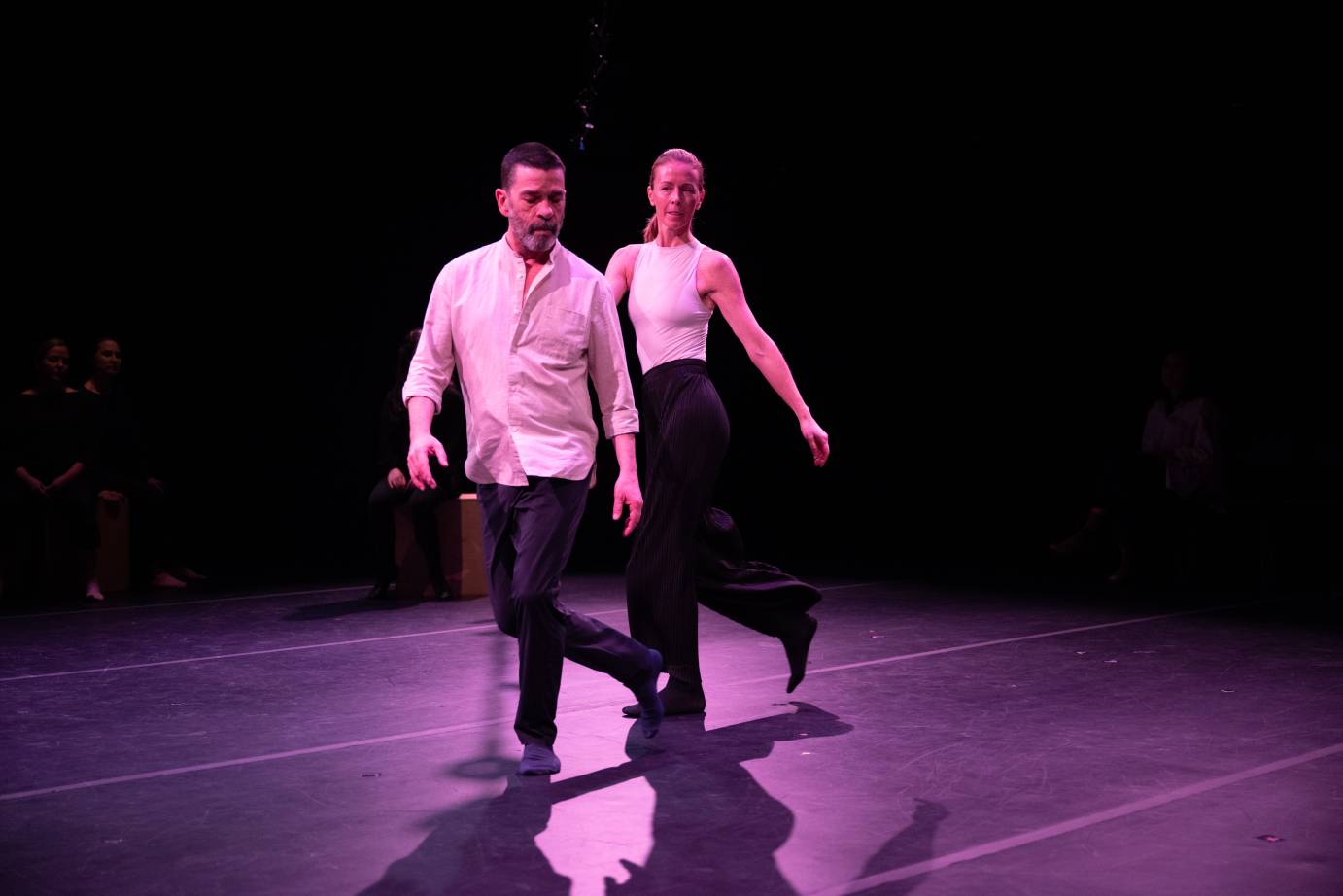
A mist of voices floats through the broken tension as the space clears to focus on a singular moment: the preparatory motion of the instant before flight. In a repeated rocking action, Colin Dunne shifts from heel to toe, his arms swing and body sways in concert. He is grounded as he gathers momentum for any possibility, measuring and anticipating with his whole body the rhythms that will fall from this action. The preparation is where the mind and body’s memories meet most intimately; it is the point where thought becomes action — a point of consummate trust and abandon. The body remembers pathways of success and failure, but most of all it remembers possibilities, lived and yet to be lived, to gather the courage to launch itself from known to unknown.
With pulses raised and calmed in turn, Butler leads us to a semi-enclosed space and invites us to sit around a long wooden table. She and her younger peers Kaitlyn Sardin and Maren Shanks assume a casual but deliberate stance atop the table. They move through a hypnotic cyclical unison: shoulders roll back and down, fingertips graze up and around hip bones, flattened backs of hands slide down to rest along the legs behind the midline, fingers wrap in from the pinky to curl into soft fists, rotating the arms outward from the shoulder socket. This is the well-remembered posture of the Irish dancer: spine straight, head held high, chest open, poised for action. Memory flows from this dancerly stance, and this reiterative postural meditation draws the three women together across differences in age and background.
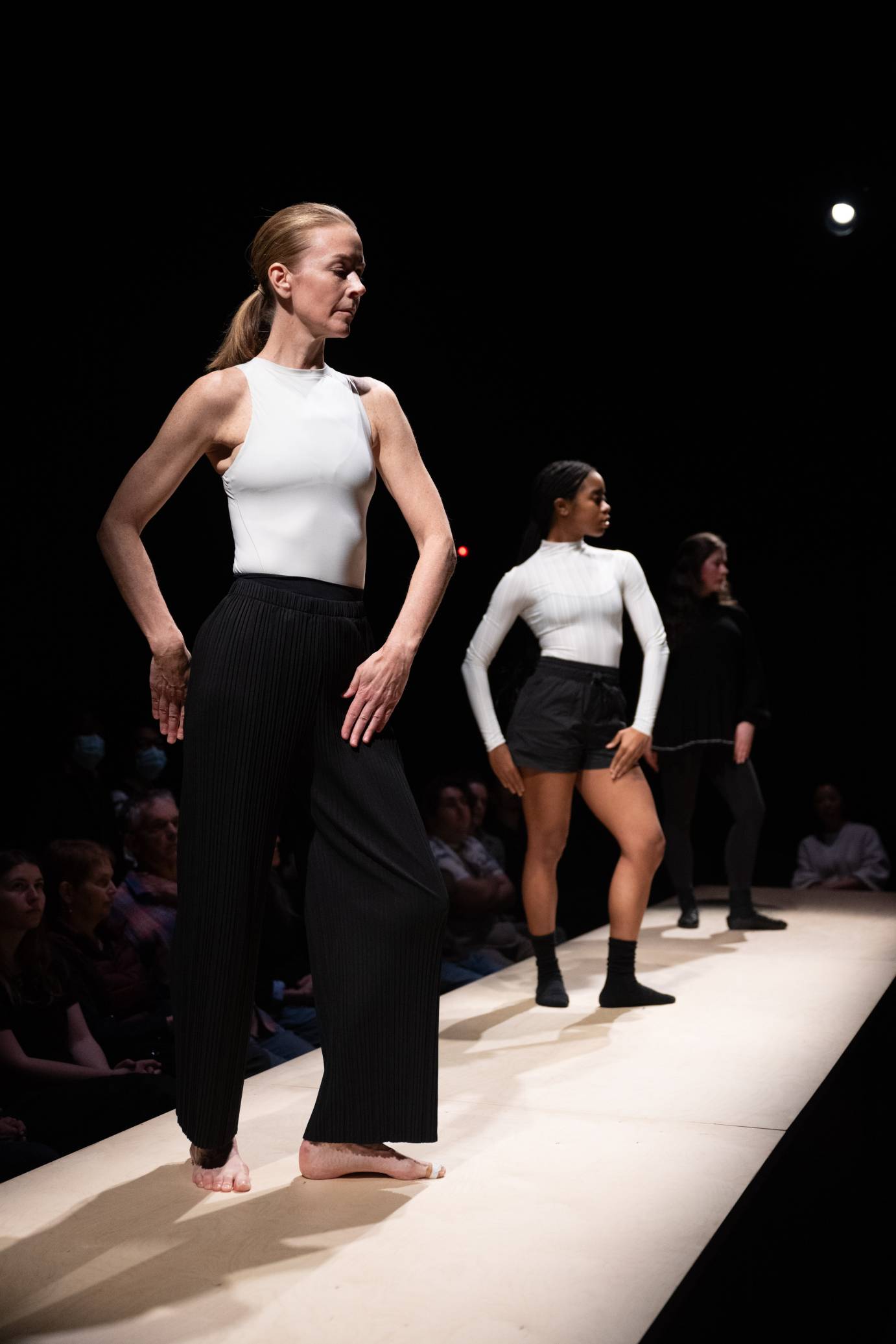
Jean Butler, Kaitlyn Sardin, Maren Shanks. Photo: Nir Arieli
All the while single voices ring out and fade back from the continuing thread of sound that seems to emanate from the table itself. We catch recollections of places, people, the texture of floors, the fit of shoes, the first steps — the microhistories that shape a lineage. The physical deconstruction continues through the fold of the knee and the fulcrum of the ankle, feet bare or in socks or traditional soft shoes. Here the line of gravity becomes imminently apparent: how the precision timing and calibration of the foot’s percussive strike channels through the alignment and weight distribution of the whole body. Butler lingers, her narrow shoulders set, the knock and swivel of her articulate bare feet supported by drummed rhythms that whisper from under the table. She steps down and places a pair of hard shoes atop the table, beckoning us with a nod to follow her into the open space.
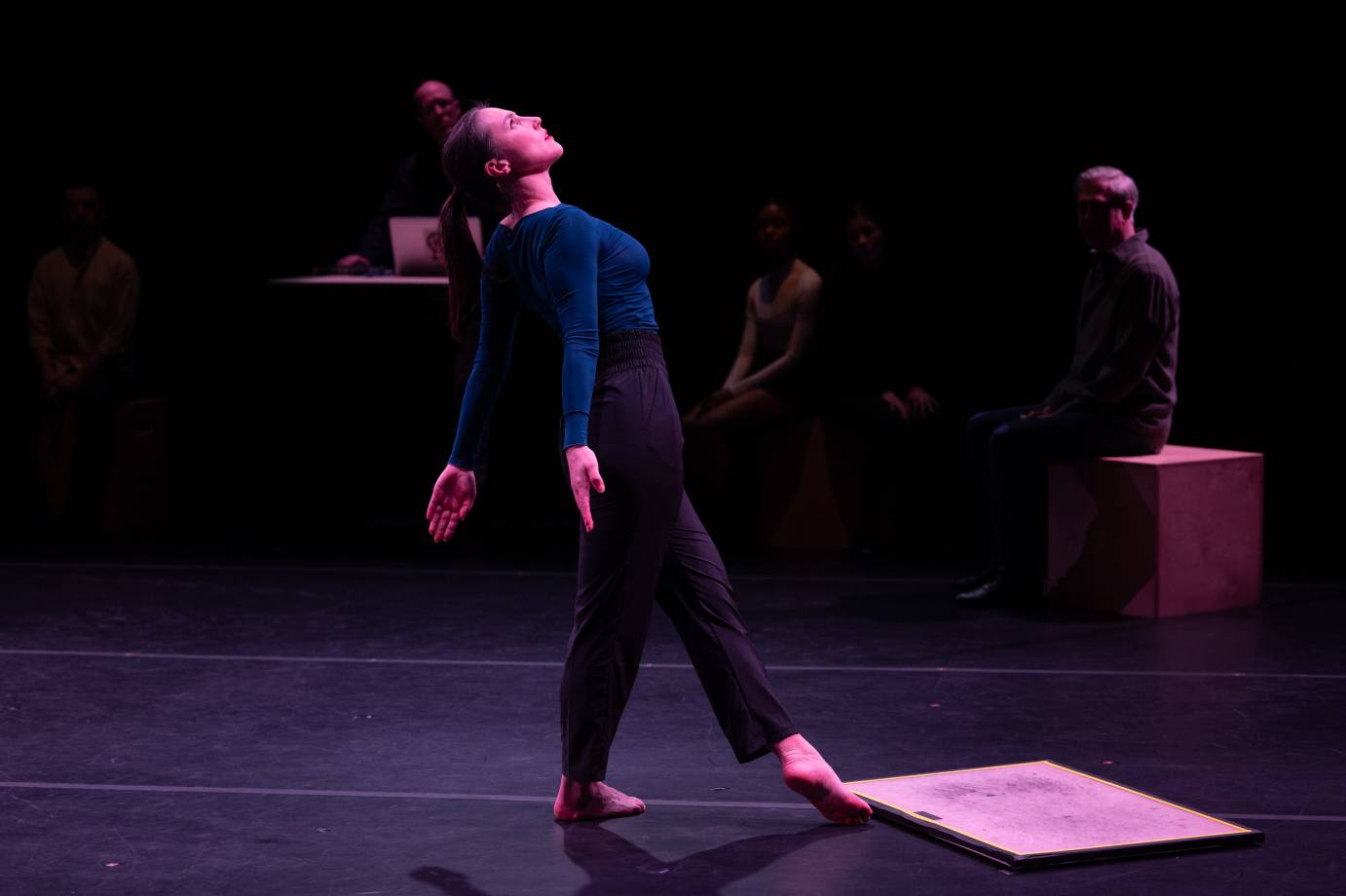
Marion Cronin. Photo: Nir Arieli
There we find the group variously poised and shod around the space as we settle into clusters of chairs. A chorus of strings and long plaintive tones echoes like wind in the grass as the dancers build a step from silence, every simple repeat a little louder — a contagious rhythm. Tension mounts as they amble around the space, catching arms lightly in passing; one or another dancer drifts away occasionally to watch and be watched by the group. Shanks, the cast’s youngest member, breezes a swift prancing triplet around the perimeter, sure feet leading, wild hair trailing in her wake. The magnetic Marion Cronin traces delicate patterns on the floor and in the air replete with the allure of hovering possibility. Butler, now in hard shoes, tells us a story in steps beaten out in time on her small square wooden stage. Tom Cashin, the cast’s elder, takes center with a traditional set dance, his nimble dexterity rendering him suddenly ageless. His steps and rhythms flow from a place deeper than memory: from ancestry, from history, through his body into the here and now.
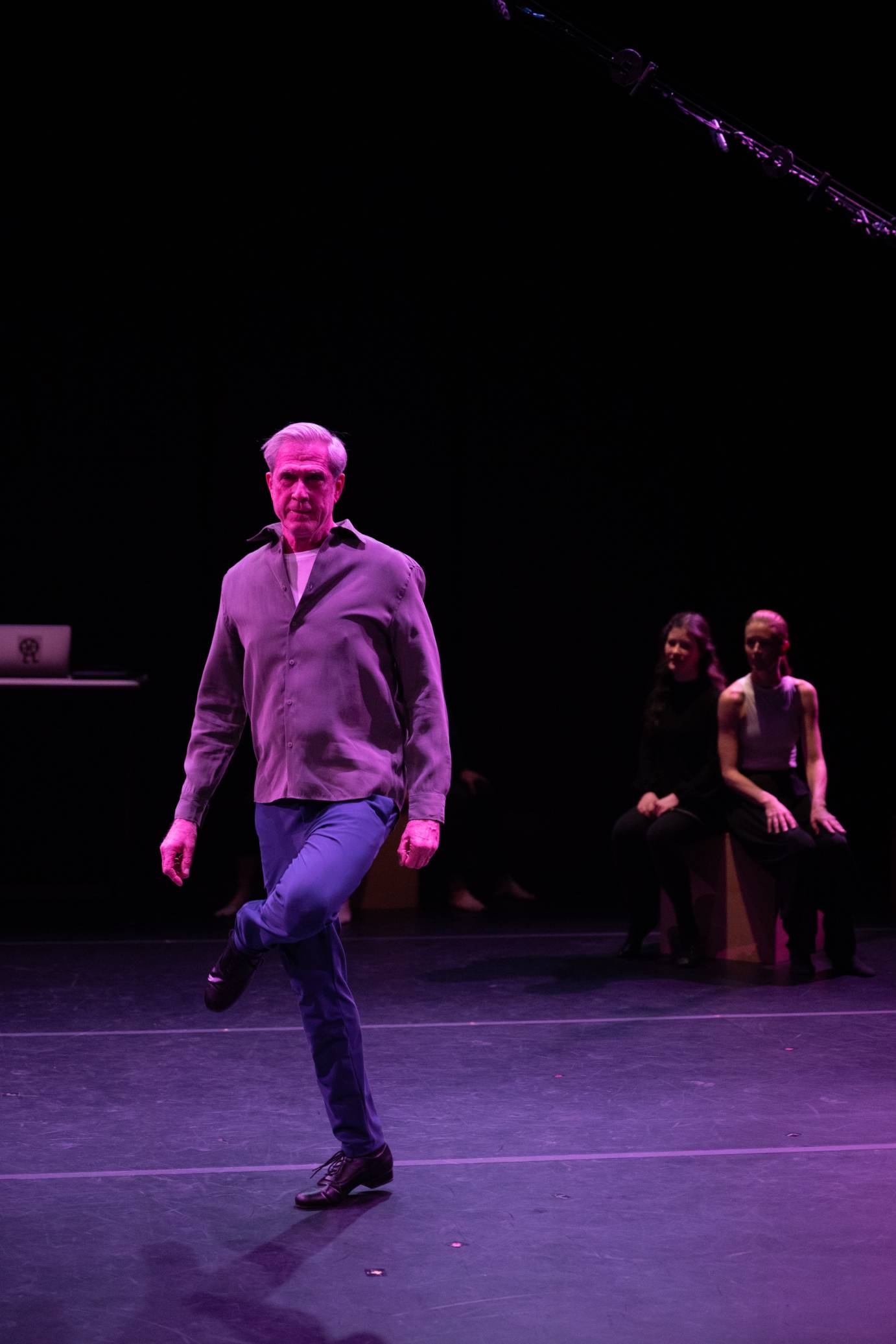
Tom Cashin (foreground), Maren Shanks and Jean Butler (background). Photo: NirArieli
Simple geometries and harmonious asymmetries emerge and dissolve as individual dances overlap and intertwine to the call of drum and fiddle. Each dancer leads and follows in turn, keeping and catching rhythm, each in their own way. Smiles abound, brightening eyes and faces, emanating fully through their bodies. What they hold, what they share is something precious and deeply resonant. Memory runs out through their bodies and replenishes itself in the very act of dancing — a dynamic and joyous act of cultural preservation.





